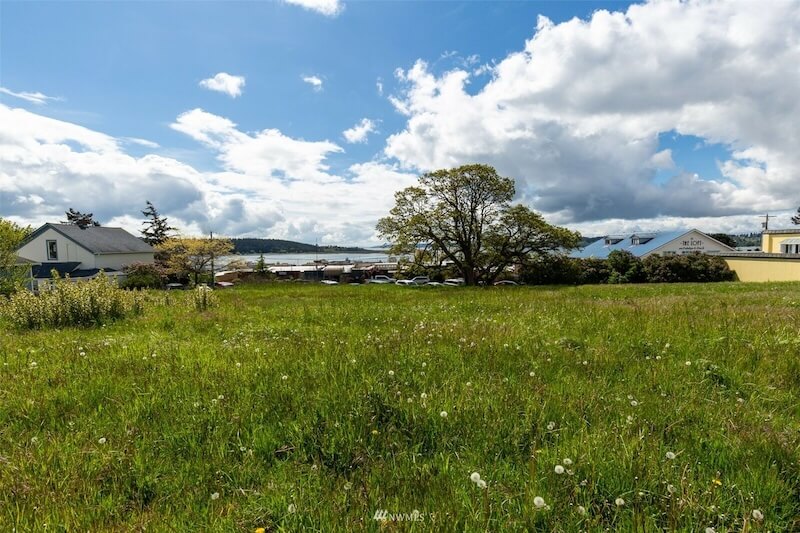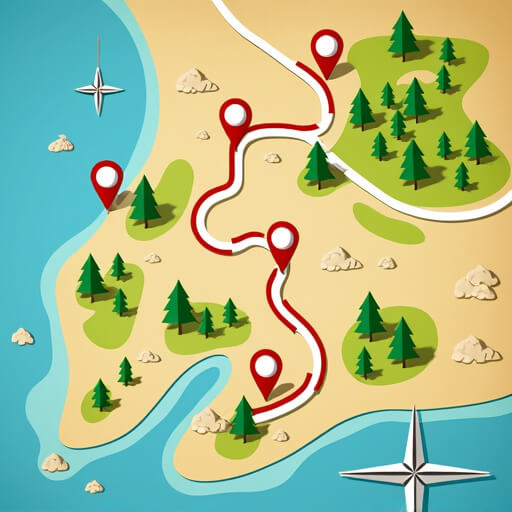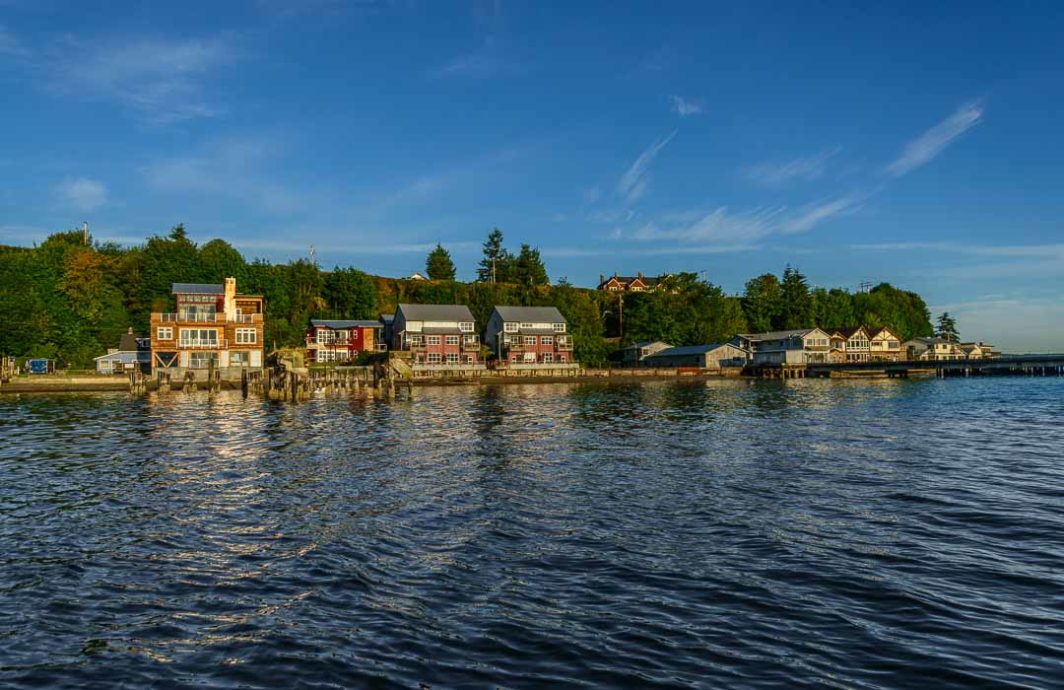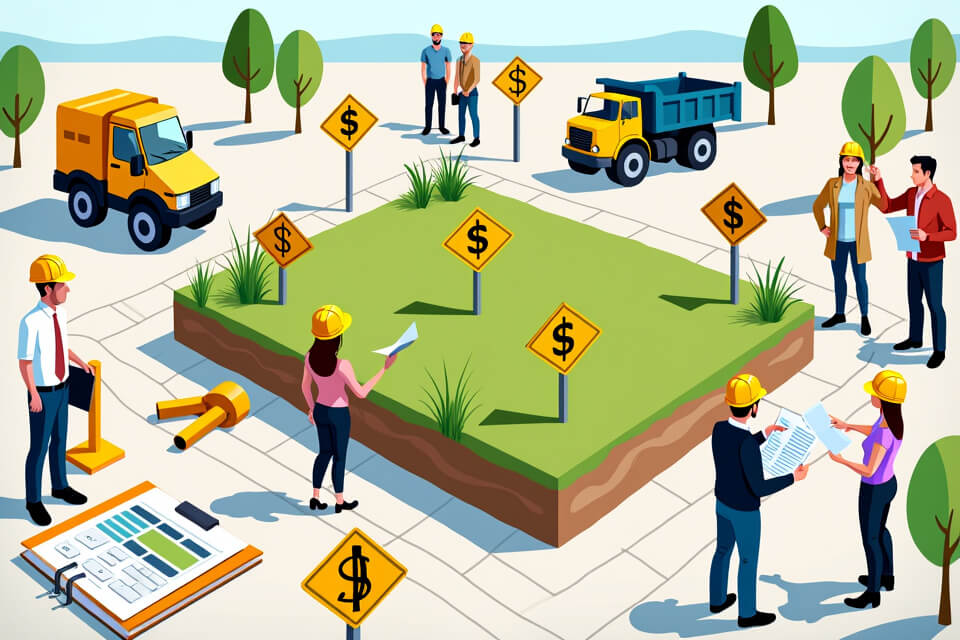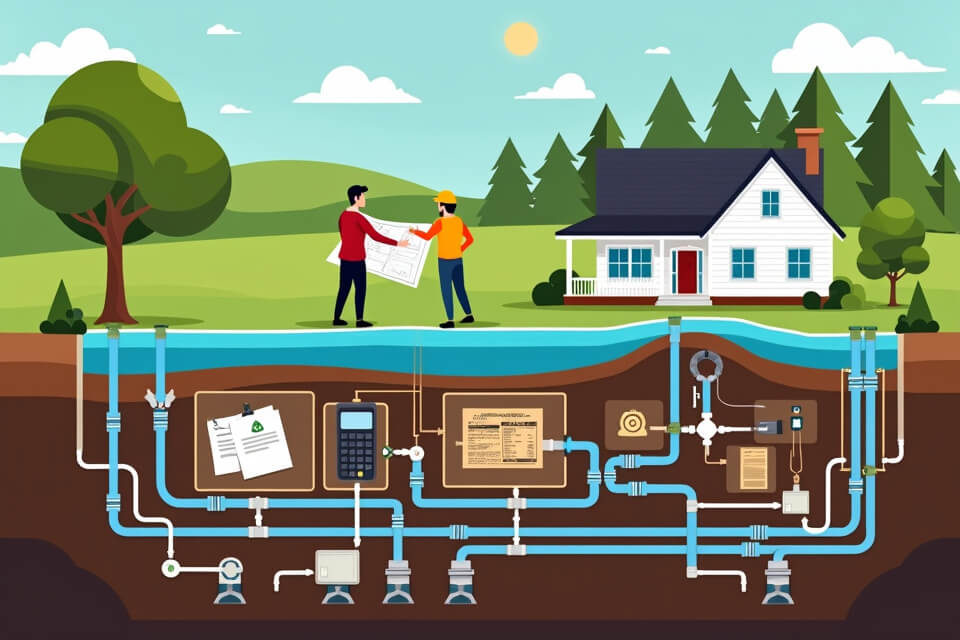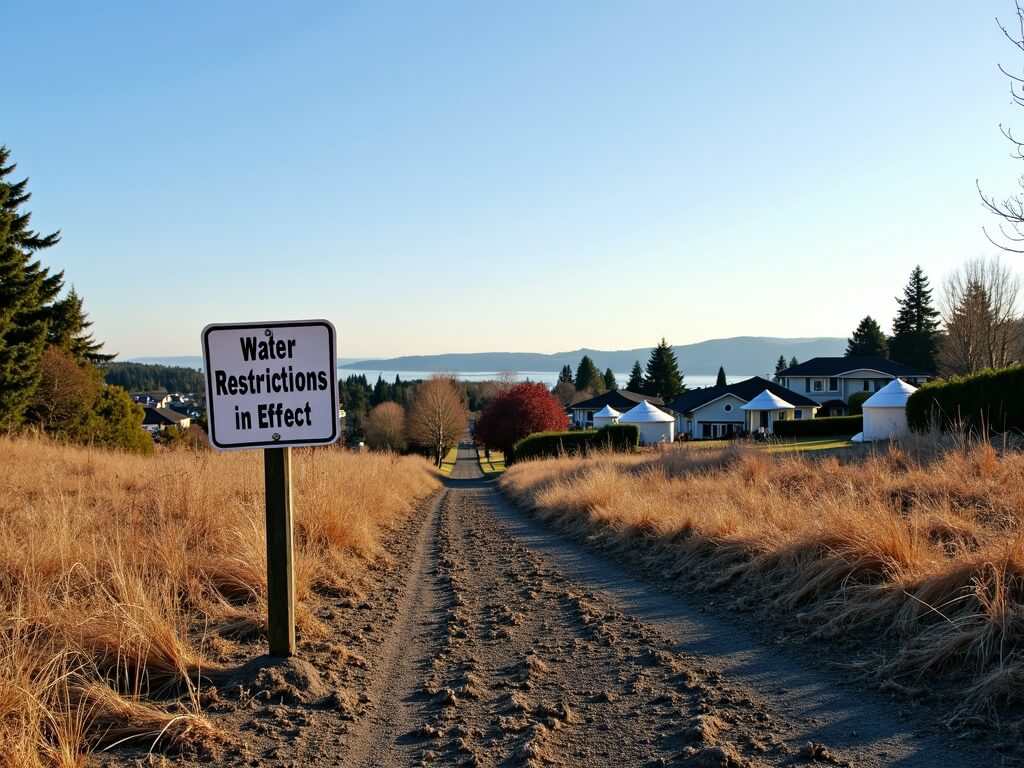Buying Vacant Land on Whidbey Island? What You Need to Know
What You Need to Know About Water, Septic, and Hidden Costs
The True Cost of Building on Vacant Land
Building your dream home? It's not just about buying land. That’s only the first chapter.
- Construction costs
- Labor
- Permits
- Even the surprises that come with the landscape itself can quickly add up.
We’ve all had the dream, haven’t we?
A vast, untouched piece of land in nature. We can build our perfect home there, from the ground up. But, here’s the truth: building on vacant land isn't about breaking ground and watching your dream rise. It’s an adventure packed with twists, turns, and costs you might not have even imagined.
Take Amy and Tim, for example. They had stars in their eyes when they bought a dream plot on Whidbey Island. But they soon learned that buying vacant land is only the beginning. Amy and Tim's story is both inspiring and cautionary. It warns of hidden builder costs and septic issues for anyone considering a similar path.
Let's show you what you need to know about buying vacant land on Whidbey Island. We'll use Amy and Tim's journey to guide us.
Amy & Tim's Story
When Amy and Tim first approached their project, they were stunned to learn that the price to even begin the project was around $1.9 to $2.1 million. Those are numbers that can take your breath away, especially when you’re starting from scratch.
One of the most critical steps in the process is understanding the full scope of what you’re getting into financially. That means asking questions that go beyond, “How much does the land cost?”
Think about what’s the cost of bringing utilities to this land? How much will it cost to hire an architect for the blueprint? What’s the price tag on permits, and are there specific local regulations that could set me back?
The Real Story About Building Your Dream Home on Vacant Land
A vast, untouched piece of land in nature. We can build our perfect home there, from the ground up. But, here’s the truth: building on vacant land isn't about breaking ground and watching your dream rise. It’s an adventure packed with twists, turns, and costs you might not have even imagined.
Take Amy and Tim, for example. They had stars in their eyes when they bought a dream plot on Whidbey Island. But they soon learned that buying vacant land is only the beginning. Amy and Tim's story is both inspiring and cautionary. It warns of hidden builder costs and septic issues for anyone considering a similar path.
Let's show you what you need to know about buying vacant land on Whidbey Island. We'll use Amy and Tim's journey to guide us.
The Real Story About Building Your Dream Home on Vacant Land
When Amy and Tim first purchased their plot on Whidbey Island, they were ecstatic. They envisioned a custom-built home with panoramic views of the water, nestled among trees, providing a peaceful retreat from the hustle and bustle of city life. However, what they didn’t realize was that the costs would start piling up before they even broke ground.
Planning for the Cost of Vacant Land
After spending $50,000 on builder estimates alone, they found that the total price for their dream home would be nearly double what they had originally budgeted. They were left scratching their heads and reworking plans, all while parked in a fifth-wheel trailer on a military base.
This isn’t just an isolated story; it’s a reality check for anyone considering building a home from scratch. Let’s walk through the key challenges you need to consider.
The True Cost of Building on Vacant Land
Building your dream home on vacant land is an exciting endeavor, but it’s important to remember that the land purchase is just the first chapter. Construction costs, labor, permits, and even the surprises that come with the landscape itself can quickly add up.
Amy and Tim learned this the hard way.
When they first started their project, they were shocked to discover that their home would cost between $1.9 and $2.1 million to build—double their initial budget. They hadn’t accounted for the additional costs of bringing utilities to the land, such as electricity and water, not to mention permits and zoning restrictions
What to Do:
- Budget beyond the land price: Plan for more than just the cost of the land. Factor in utilities, permits, site preparation, and a contingency budget for unexpected expenses.
- Consult professionals early: Engage with builders, architects, and local utility providers to get accurate estimates of the costs involved.
Working with Builders: Pitfalls to Avoid
Choosing the right builders is a critical step in the process, and Amy and Tim's story underscores just how important this decision can be.
After spending $50,000 on builder estimates, they found themselves back at square one, realizing that they hadn’t fully vetted the builders they initially hired.
It’s not just about finding someone to build walls and a roof; it’s about finding a builder with experience in custom homes and familiarity with the challenges of Whidbey Island’s unique terrain.
What to Do
South Whidbey Island offers a range of amenities to ensure a comfortable and fulfilling lifestyle:
Do your homework: Ask for references and make sure your builder has experience with custom builds, especially on Whidbey Island.
Understand potential biases: Some real estate agents may have relationships with builders, earning referral fees when their clients hire them. Be sure to ask questions and seek transparency in all recommendations.
Navigating Building Permits and Zoning Restrictions
Ah, zoning. The word itself sounds bureaucratic, and that’s because it is. But it’s also essential. Zoning laws dictate what you can build, where you can build, and even how tall your home can be. Amy and Tim, for instance, purchased land without fully grasping the zoning laws in their area. That led to some major setbacks in the building process, delays that added to their overall costs.
Permits are another beast altogether. Every jurisdiction has its own set of rules and timelines, and you’ll need to get approval for everything from your foundation to your roof pitch. And don’t forget environmental restrictions. Whidbey Island, for example, has critical area ordinances that might impact where or if you can build on certain parts of the land.
What to Do:
Vet your builder carefully: Ensure that your builder has specific experience working on custom builds on challenging terrain, like Whidbey Island.
Ask for references: Reach out to previous clients who had similar projects and learn from their experience.
Utilities and Septic System Planning: The Hidden Giants
Now, let’s move onto something many first-time land buyers don’t even think about until they’re in the thick of it: utilities.
Water, electricity, septic systems—these are things that don’t just magically appear because you bought a piece of land. They take planning, permits, and, of course, money.
Amy and Tim’s land was tied to a community water system, Silver Lake Water.
But here’s where it gets tricky: they didn’t realize their water availability certificate could expire. That meant, if the system went into moratorium, they would be stuck with no water source unless they drilled a well. And you guessed it—drilling a well isn’t cheap. We’re talking $30,000 to $40,000.
Amy and Tim learned this the hard way.
When they first started their project, they were shocked to discover that their home would cost between $1.9 and $2.1 million to build—double their initial budget.
They hadn’t accounted for the additional costs of bringing utilities to the land, such as electricity and water, not to mention permits and zoning restrictions
What to Do:
Check water availability early: Research the status of the water system, or find out if you’ll need to drill a well. If the system is under moratorium, you’ll need a plan for an alternative water source.
Prepare for septic system installation: Conduct a soil test (PERC test) to determine if the land is suitable for a septic system, and work with engineers to design the right setup for your property.
The All-Important Issue of Water Access
Water is essential, and no matter how idyllic your property looks, if you can’t secure a water source, your plans could come to a screeching halt. On Whidbey Island, many vacant lots aren’t hooked up to city water. This means you’ll either rely on a community water system or need to drill your own well, each presenting its own challenges.
Community water systems, while common, are not foolproof. A major issue arises when the Department of Ecology places water systems under moratorium.
Even if the property you're eyeing is part of a community water system, you could be restricted from hooking up due to overburdened infrastructure. As mentioned in one case, certain areas might have already maxed out their water capacity.
This leaves potential homeowners in a frustrating limbo, where you own the land, but no development can occur without a water availability certificate.
If the water system is in moratorium or not accessible, your next option is drilling a well. Drilling a well is often more complicated (and costly) than you might think.
Wells on Whidbey Island can cost anywhere from $30,000 to $40,000 depending on the depth of the aquifer, the geology, and the specific requirements of the property
Before sinking a well, you’ll also need to ensure that the well's 100-foot protection radius doesn't interfere with neighboring properties or infrastructure, such as septic systems, which can cause significant planning challenges.
What to Do:
- Research water availability early: Before you fall in love with a piece of land, check the status of the community water system. Speak with the Department of Ecology or local water utility providers to verify water availability and moratorium risks.
- Plan for well drilling: If a well is needed, consult with local well drillers to understand the costs and potential complications. Look at surrounding properties’ well depths to estimate the cost.
- Understand the permitting process: Ensure you get approval for the well and its location, taking into account the required 100-foot protection radius and potential conflicts with septic systems or neighboring properties.
Search for Homes in South Whidbey Island, Washington
Conclusion: Preparing for Your Dream Home on Whidbey Island
Building a dream home on vacant land is a deeply personal and exciting journey. But it’s not one without its challenges. From budgeting for the unexpected to navigating the maze of zoning laws and permits, there’s a lot to consider.
Amy and Tim’s story is a perfect example of how being prepared can make or break the building experience. Despite their initial setbacks, they reworked their plans, consulted new professionals, and managed to build a home they truly love.
Their experience highlights the importance of understanding every aspect of the process, from water access to builder selection.
Pro Tip
Always have a realistic budget cushion. Even the best-laid plans can run into unexpected hurdles that inflate your costs.
The key to success? Do your research.
Hire professionals who understand the terrain—both literally and figuratively.
And always, always have a contingency plan (and budget) for the unexpected twists that will inevitably come your way.
Are you ready to embark on your own home-building journey? Take a page from Amy and Tim’s book. Plan for the best, but be ready for the unexpected. After all, when it comes to building your dream home, the adventure is part of the reward.
Building your dream home on vacant land is an exciting endeavor, but it’s important to remember that the land purchase is just the first chapter. Construction costs, labor, permits, and even the surprises that come with the landscape itself can quickly add up. Always feel free to contact us with your questions.
Find or Build Your Dream Home
At Better Homes and Gardens McKenzie Realty, we understand South Whidbey's unique charm and opportunities. Our team of agents is committed to assisting you in discovering your ideal home in South Whidbey and its enchanting surroundings. Whether you're seeking a coastal retreat or a countryside estate, our expertise ensures seamless guidance.

